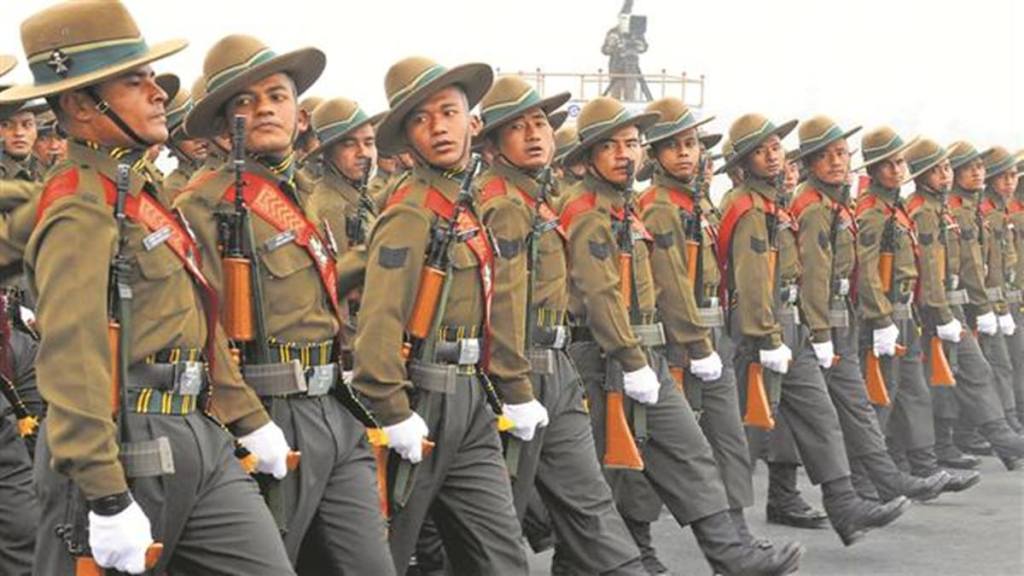In response to the depleting strength of Nepalese Gorkhas in the Indian Army due to the ‘Agnipath’ scheme, the Indian Army is devising a contingency plan to induct ‘tribals with similar (Gorkha) traits’ into the Gorkha Rifles.
Contingency Plan
Stating that this is just a contingency plan, sources in the defence and security establishment say that the plan is in place and in case the issues related to the recruitment from Nepal does not get resolved then this will be implemented.
While the plan aims to maintain the character of the Gorkha Rifles, it seeks to recruit individuals from states like Uttarakhand, Himachal Pradesh, Sikkim, Arunachal Pradesh, and Assam, who possess similar attributes and physical appearances to the Nepalese Gorkhas. Although the Gorkha Regiments have historically maintained a 60:40 ratio between Nepalese Gorkhas and Indian-resident Gorkhas, the new strategy intends to diversify the recruitment pool.
Gorkha Regiment
Renowned for their fearlessness, dedication, courage, and discipline, the Gorkhas have a rich history of serving in various armed forces, including the Indian Army, British Army, and Singapore Police. Currently, the Gorkhas are serving in multiple regiments, contributing to 43 Battalions, one Artillery unit, Naga Regiment, Assam Regiment, and the 5 Guards Unit, as well as the Assam Rifles.
What led to the contingency plan?
The decision to implement this contingency plan is driven by the 2022 Agnipath Scheme, a military recruitment reform initiated by the government to make the armed forces more agile and potent. However, Kathmandu, a signatory of the 1947 tripartite agreement between India, Nepal, and the United Kingdom, suspended the recruitment of Nepalese youths in the Indian Army, arguing that the Agnipath Scheme contradicts the provisions of the treaty. In contrast, New Delhi has maintained that the scheme does not violate the agreement and ensures equal salaries and facilities for Gorkhas from both Nepal and India.
Financial Express Online has reported earlier that under the Agnipath Scheme, youths between 17.5 to 21 years can apply for a 4-year period of service, with only 25 percent of soldiers retained for an additional 15 years based on merit and organizational needs. The remaining 75 percent will be compensated and retired without pension and benefits. Annually around 4,000 Gorkhas retire and there are around 25,000 Nepalese-domicile Gorkhas serving in the Indian Army.
Is this the first time?
No. According to sources in the defence and security establishment this is not the first time that such a step is being initiated. In the past, the Indian Army experimented with increasing the recruitment of youths from Uttarakhand’s Kumaon and Garhwal regions to diversify the Gorkha Rifles. Nonetheless, the policy to disallow Nepalese Gorkhas from joining the Naga Regiment, Assam Regiment, and Guards Unit is scheduled for reassessment in 2024.
While the contingency plan is seen as a temporary solution to address the manpower shortage, the Indian Army remains committed to upholding the Gorkhas’ legacy and indomitable spirit in its ranks. By embracing change and adapting to challenges, the Gorkha Rifles continue to stand strong, united, and diverse in their commitment to serving the nation.


